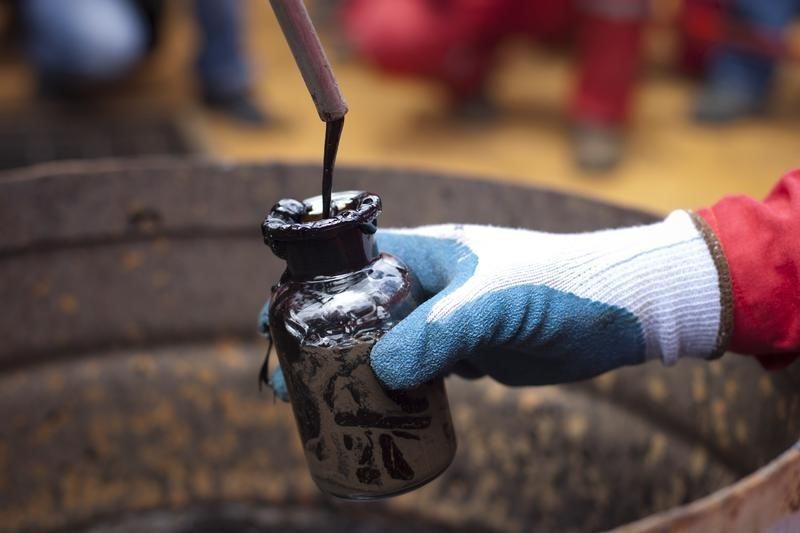By Barani Krishnan
Investing.com -- The proverbial China sneeze that gives the world a cold is still true. But in the case of oil, outsized moves of 5% or more are the greater norm now, with a barrel struggling to hold three-digit pricing while OPEC+ figures out what to do with output as global economic softness threatens energy demand.
New York-traded West Texas Intermediate, or WTI, was down $4.31, or 4.4%, to $94.31 by 1:11 PM ET (17:11 GMT) as the U.S. crude benchmark again failed to fulfill oil’s aspirations of returning to the $100 mark it last traded at on July 20.
London-traded Brent was down $3.53, or 3.4%, to $100.44. It was the global crude benchmark’s first foray under $100 since July 24.
“The reactions are just outsized these days, on both sides of the divide,” said John Kilduff, founding partner at New York energy hedge fund Again Capital. “WTI can’t seem to get back to $100 easily and the data on both the industrial and retail front isn’t helping.”
The latest swoon in crude prices came after data out over the weekend showed Chinese factory activity shrinking in July amid a fresh round of COVID-related lockdowns. Beijing’s official purchasing manager’s index fell to 49.0 in July, indicating a contraction, from 50.2 in the previous month.
China is the world’s largest importer of crude, and a prolonged economic downturn there, not to mention the other regional economic powerhouses, is likely to weigh on global oil demand.
In the U.S., manufacturing PMI was a notch better at 52.8 versus 53 for June. But the accompanying note from the Institute for Supply Management did not help sentiment in oil, “Growing inflation is pushing a stronger narrative around pending recession concerns. Many customers appear to be pulling back on orders in an effort to reduce inventories,” the institute said.
The news out of the rest of Asia wasn’t any better, as South Korea's factory activity fell for the first time in almost two years and Japan saw its slowest growth in activity in 10 months.
Manufacturing is already in contraction in the Eurozone owing to the acute energy crisis and accompanying inflation problem, and those factors also appear to be hitting the consumers as German retail sales slumped to the biggest annual drop since the country started collecting pan-German data in 1994.
Crude prices have shuttled in and out of $100 territory as the debate has grown over oil demand and whether demand destruction is already happening in the U.S. with gasoline stubbornly averaging above $4 per gallon.
OPEC+ — the alliance tying the 13-member Saudi-led Organization of the Petroleum Exporting Countries with 10 other oil producers steered by Russia — meets Wednesday to decide on September output quotas for the nations in the group.
Wire reports so far indicate that the 23-nation OPEC+ will likely leave production as it is or raise it just slightly for September when the group meets on Wednesday for its monthly discussion on output quotas.
Most importantly, OPEC+ shouldn’t slash production at this point. And there’s a danger of that happening if crude prices, which fell from Ukraine-invasion highs of $140 in March to below $100 last week, continue falling.
As it stands, OPEC+ would have unwound all its historic pandemic-era production cuts by next month. It’s now at a crossroads where output is concerned.
Prior to President Joe Biden’s visit to Saudi Arabia last month, OPEC+ had already bumped up production by 50% from June levels to reach almost 650,000 barrels per day for July and August. If it maintains that for September, or raises it by between 10,000 or 20,000 bpd, it would still be good from the alliance’s perspective and a win — albeit, a measured one, for Biden.
Tanker-tracking data compiled by Bloomberg shows Saudi crude exports soared in July to April 2020 highs amid international pressure to tame elevated oil prices. Observed seaborne shipments from the kingdom came to about 7.5 million barrels a day last month. That compares with a revised 6.6 million barrels a day in June.
